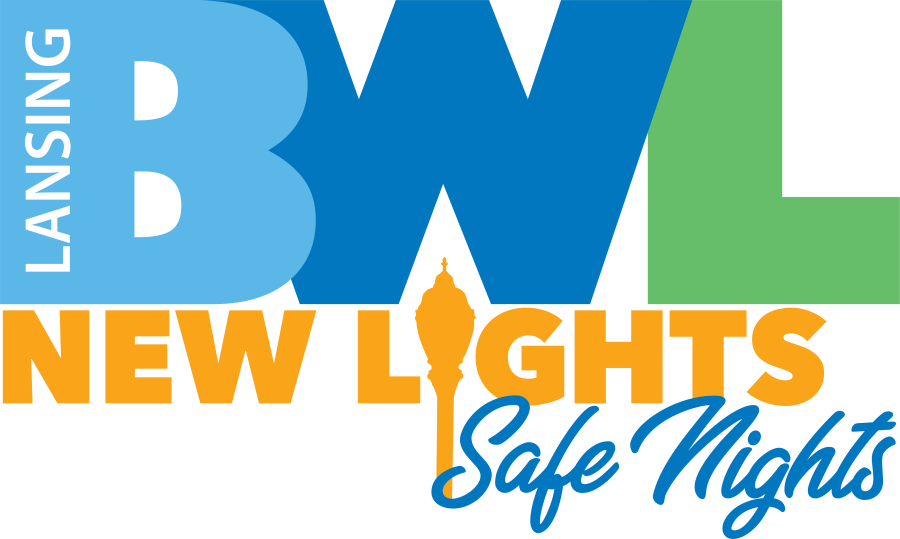Reporting a Streetlight Out
Is there a broken streetlight or light out in your neighborhood? Customers can report streetlights out by calling 866-710-8222 or online through our form below.
New Lights, Safe Nights
The BWL upgraded all streetlights in the service territory to LED lightbulbs, remaining climate and environmentally focused. Because LEDs consume 40 percent less energy, they're more energy efficient, easier to maintain, provide a cost savings and are in line with industry standards to move away from inefficient light sources.

Frequently Asked Questions
Please take a look at our FAQ section below, which answers our most commonly asked questions about streetlights. You may also download our FAQ document.
If you have further questions, please email LEDStreetLights@lbwl.com or call 517-702-6002.
Report a purple streetlight by calling 866-710-8222.
The BWL is responsible for 34,500 fixtures including streetlights and outdoor protective lighting throughout the greater Lansing area and surrounding communities. All were converted to LEDs.
White LED options are already available and are expected to increase in the future. LED lighting promotes carbon reduction, a healthy ecosystem and applies industry benchmarks and standards reflecting best practice.
The BWL will consider:
- Choosing fixtures with minimal uplight while still in accordance with ANSI/IES RP-8-18
- Using “warm-white” or filtered LEDs (CCT < 3000 K; S/P ratio < 1.2) to minimize blue emission
- Looking for products with adaptive controls like dimmers, timers and motion sensors
- Avoiding over-lighting because of the higher luminous efficiency of LEDs
- Selecting proper distribution patterns suitable for the roadway
The BWL has standardized its streetlight system with a color temp of 3000K. Where possible, International Dark Sky (IDA) fixtures are selected and carry an IDA Seal of Approval. More information can be found on www.darksky.org.
The American Medical Association encourages minimizing blue-rich lighting by using the lowest emission of blue light possible. Additionally, the BWL will install LEDs using responsible light design to minimize detrimental human and environmental effects.
Local governments pay the BWL to maintain streetlights throughout our service territory.
